How to create and use a medical chatbot for medical diagnosis, symptom checking and more: detailed guide
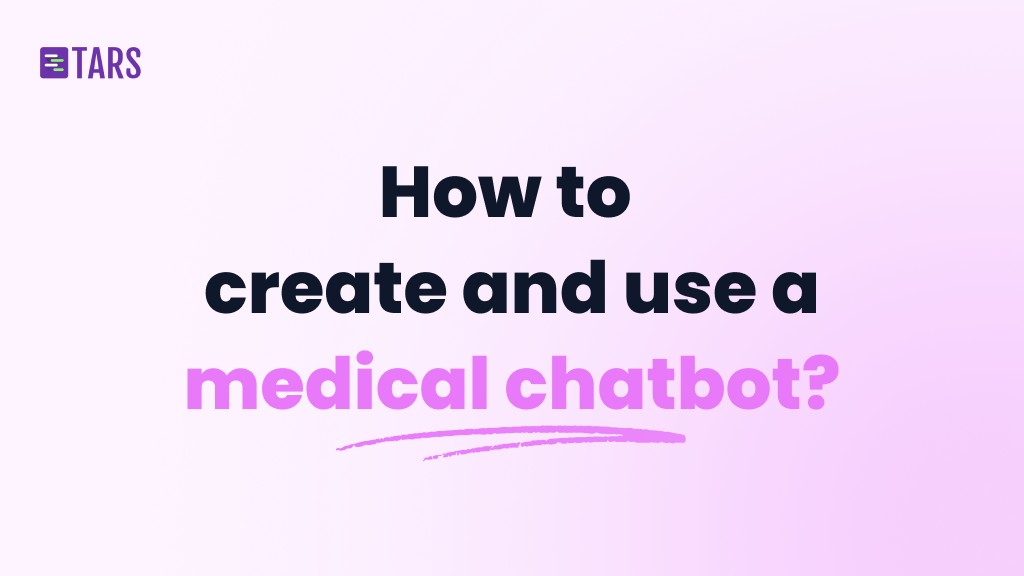
Have you ever caught yourself turning to “Dr. Google” when you felt a bit off?
According to the National Center for Biotechnology Information (NCBI), a significant number of Americans—more than a third—self-diagnose, while 70% seek online health advice. What role, then, do AI and medical chatbots play in this evolving landscape?
The healthcare industry stands at an inflection point. While traditional chatbots have served as valuable tools for basic interactions, the emergence of AI Agents represents a fundamental shift in how we approach healthcare automation. Unlike conventional chatbots that follow pre-programmed paths, AI Agents can reason, adapt, and execute complex multi-step workflows.
In this guide, we’ll cover:
- The basics of medical chatbots.
- The difference between structured vs AI-powered medical chatbots, and how they work.
- The future of AI and automation in healthcare.
- Step-by-step creation of medical chatbots.
What are medical chatbots?
Medical chatbots are interactive software programs designed to automate conversations with patients, providing healthcare-related information and assistance.
These chatbots can be of two types: Structured medical chatbots and AI-powered medical chatbots. The choice between the types of chatbots depends highly on the requirement of the healthcare provider, the problem they’re trying to solve, and the level of engagement needed from the patient.
1. What are structured medical chatbots?
Structured medical chatbots function on structured flows, meaning they follow specific, pre-set rules to interact. They are great for straightforward tasks like filling out forms or providing exact medical details. These chatbots excel at giving reliable answers, but are limited in their capacity to handle complex queries or provide personalized assistance.
2. What are AI-powered medical chatbots?
AI-powered chatbots, such as Tars medical AI Agents, use the strengths of both technologies—structured flows and AI models. By using this hybrid approach, medical chatbots can handle a wide range of tasks, including symptom assessment, disease diagnosis, appointment scheduling, patient education, and more.
These chatbots become Healthcare AI Agents who can adapt and learn from interactions, offering personalized responses and a wider range of capabilities.
The workings behind AI Agents at Tars consist of three prominent models. Let’s explore them with the scenario of a patient who wants to go to an ENT clinic:
- Answering Model: This allows the medical chatbot to answer FAQs, automate repetitive conversations, and assist in informing patients, e.g. “Can I just walk into the clinic or do I have to book an appointment in advance?” or “Is there a fee to reschedule my appointment?”
- Intent Detection Model: Helps the chatbot understand the intent and context of user queries. For example, if the patient types, “I’ve had a sore throat for almost a week,” the chatbot will understand that the patient might want a diagnosis of the symptom or to book an appointment with a doctor.
- Extraction Model: It converts natural language into structured data, which can be used to facilitate administrative purposes. For example, if the patient says, “I need to know how much a throat swab test will cost at your clinic,” the model identifies and extracts key details like ‘throat swab test’ and ‘cost’ and quickly provides the right information from clinic’s records.
These models ensure that medical Agents are equipped to exceed expectations and assist patients. But, while AI medical chatbots have the potential to revolutionize patient care, there are some myths around the future implications as well. Let’s take a data-driven approach to the future of AI in healthcare.
What are the future implications of AI in healthcare?
AI has made big strides in recent years, impacting industries across the globe, and the healthcare industry is no exception. There’s a vast demand for reliable health information, a gap that is being increasingly filled by AI:
- IBM highlights how AI can halve healthcare costs and boost outcomes by 40%.
- Additionally, NCBI research reveals that 78.4% of survey participants (n=476) are open to using ChatGPT for self-diagnosis.
The growing trust in AI underscores its potential impact on healthcare, making AI a significant part of the future of the healthcare industry. But too much trust is not a good thing either, because AI is yet to evolve to a stage where it can reliably do what doctors do.
Myth-busting: Can AI medical chatbots replace doctors?
While chatbots cannot replace human doctors, they can play a crucial role in assisting with disease diagnosis. Medical chatbots are equipped with vast databases of medical knowledge and utilize sophisticated algorithms to analyze symptoms and provide potential diagnoses.
However, it’s important to note that chatbot diagnoses should always be validated by medical professionals. Chatbots serve as valuable tools to support healthcare providers and help patients make informed decisions about seeking further medical attention.
Now, we’ll look more closely at the use cases of medical chatbots in healthcare.
Use-cases of medical chatbots
- Symptom Assessment: Medical chatbots can interact with patients to gather information about their symptoms and provide an initial assessment or advice on the next steps, such as whether to seek professional medical care.
- Appointment Scheduling: Chatbots can handle appointment bookings, rescheduling, and cancellations, interfacing directly with hospital or clinic scheduling systems to update availability in real time.
- Patient Triage: In emergency or busy settings, chatbots can help prioritize patient care based on the urgency of conditions, ensuring those who need immediate attention are quickly identified.
- Medication Reminders: Chatbots can send reminders to patients about taking their medications, which is particularly useful for managing chronic conditions and ensuring adherence to prescribed treatment plans.
- Information Provision: Providing patients with reliable information about diseases, treatments, dietary suggestions, and exercise tips tailored to their health conditions.
- Follow-Up Care: Chatbots can assist in follow-up care by sending patients reminders for follow-up visits, post-treatment care instructions, and monitoring recovery progress.
- Mental Health Support: Some chatbots are designed to offer support in managing mental health conditions, providing therapeutic interactions like cognitive behavioral therapy (CBT) techniques.
- Health Monitoring: Integrating with devices that collect patient data (like wearables), chatbots can monitor health metrics (e.g., blood pressure, blood sugar) and alert healthcare providers if the data indicates a need for intervention.
- Billing and Insurance Queries: Handling inquiries related to costs, insurance coverage, and billing details, thereby reducing the administrative burden on human staff.
- Patient Feedback Collection: Collecting feedback about patient experiences at healthcare facilities to improve service quality and patient satisfaction.
With these use-cases, you can see how versatile medical chatbots can be in enhancing the efficiency of healthcare services.
How to create a medical Agent: A step-by-step guide
Creating a medical Agent is easy when you follow a step-by-step process. With the 8 steps described below, you can take a structured approach to building medical AI Agent.
Step 1: Define the pain points and what you’re trying to solve
Determine what problems the Agent will solve. Will it help with symptom checking, appointment scheduling, or patient education? Once your objectives and use-cases are clear, outline what you want to achieve with your Agent and how you will measure its success (reducing wait times, improving patient engagement, or automating routine inquiries).
Step 2: Choose a platform for your medical Agent
Decide whether you need a rule-based system or an AI Agent. This decision will be based on the features, affordability, and practicality of each approach.
| Feature | Structured Chatbots | AI Agents |
|---|---|---|
| Flexibility | Low, fixed responses | High, learns, and adapts |
| Deployment Complexity | Low, easier to implement | High, requires a complex setup and demands up-front resources |
| User Engagement | Basic interactions, requires Live Chat for complex queries | Dynamic and conversational |
| Use Cases | Simple tasks (e.g., scheduling) | Complex tasks (e.g., diagnosis) |
| Cost | Generally lower | Generally higher |
Next, pick an Agentic platform that can fulfill your requirements. Ensure that the platform can integrate with your existing healthcare systems, like electronic health records (EHR) or customer relationship management (CRM) systems. For example, Tars integrates with your existing frameworks through MCP-based tools with ease.
Step 3: Design the Conversation Flow
Map out interactions by designing how the Agent will interact with users. Start from greeting to potential pathways of the conversation, depending on user responses. Thoroughly consider which medical outcomes you would lead your patients to, and ensure that patients do not get stuck in conversational loops.
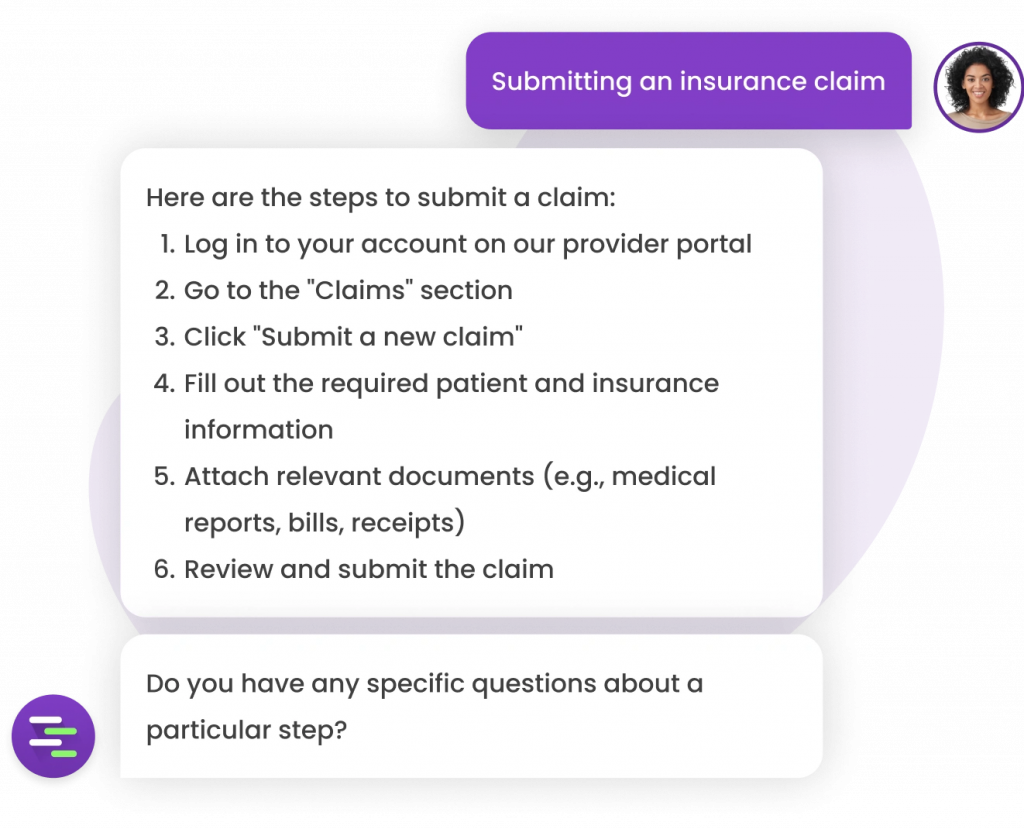
Step 4: Develop the medical Agent
If using AI, train the Agent using relevant medical data to update its knowledge base. Ensure compliance with data privacy regulations.
Use the tools provided by your chosen platform to create the Agent: this might involve some coding or no-code solutions, depending on the platform. Some platforms, like Tars, will initially build the Agent for your business needs, and hand over the management to your team.

Step 5: Test and refine your medical Agent
Before going live, conduct thorough testing internally to check for bugs and ensure the flow works as intended. Your platform might have methods of testing and refining responses, such as AI Self-Evaluation. After initial testing, gather feedback from a small group of end-users, and make necessary adjustments.

Step 6: Ensure compliance and security
Ensure the Agent complies with healthcare regulations such as HIPAA in the US or GDPR in Europe, and implement security measures to protect patient data.
Step 7: Deploy the medical Agent
Go live with the Agent on your healthcare facility’s website, app, or other patient interaction points such as WhatsApp.
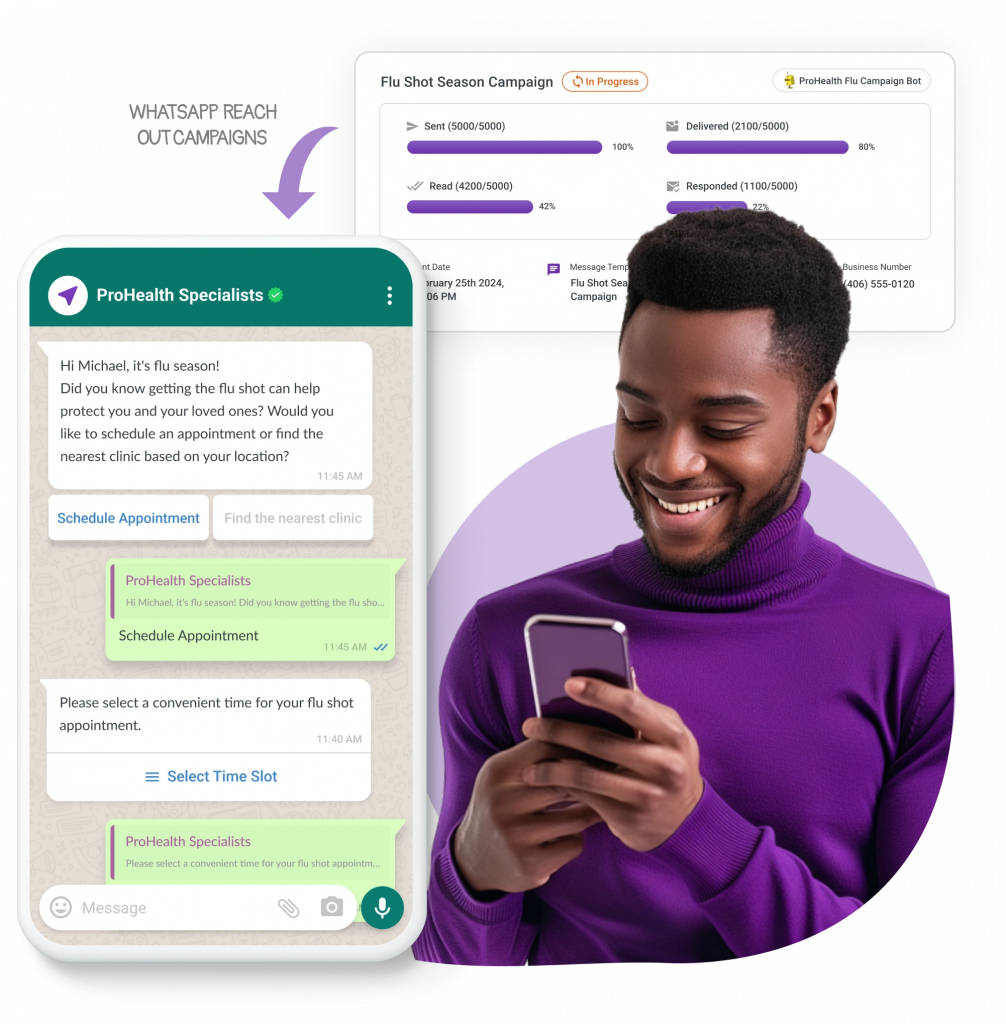
Step 8: Monitor and improve your medical Agent
Monitor how the Agent is performing, what queries it is handling well, and where it might be falling short. Regularly review conversations to identify areas for improvement. Your platform might offer some insights for analysis, such as User Flow Analytics or Chat Analytics.
Based on these data-driven insights, keep the Agent updated with new information by updating its knowledge base and evaluating its performance.
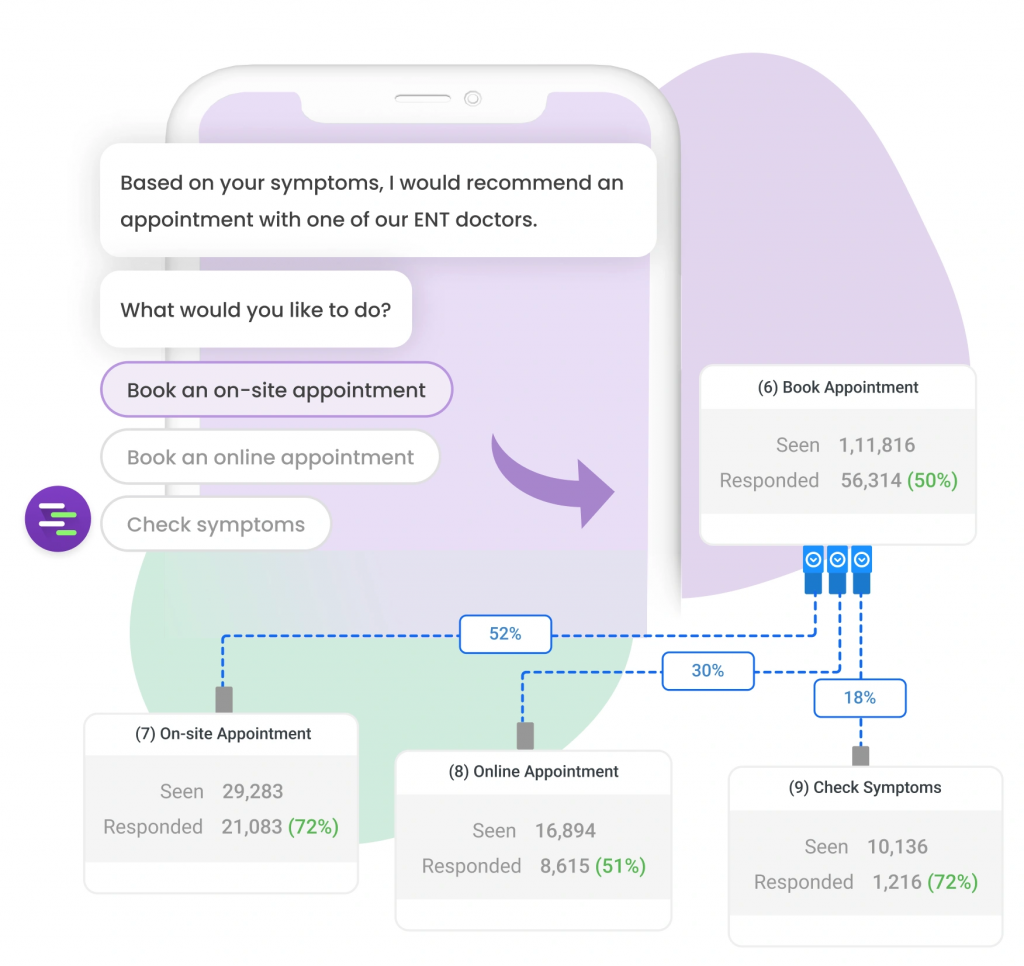
By following these steps, you can ensure that your medical Agent continually exceeds user expectations and helps you provide better healthcare services.
How Tars uses technology to drive healthcare solutions
At Tars, we have been in the chatbot and Conversational AI industry for over 8 years. Having built and deployed structured healthcare chatbots, we’ve seen a variety of outcomes:
- Automation of over 1 million customer service conversations (Read more)
- 82% accuracy in query resolution (Read more)
- Monthly bookings boosted by 25% (Read more)
- 50% conversion rate increase (Read more)
However, with AI making strides in the healthcare industry, we decided to go one step further and enhance healthcare experiences with a hybrid approach, leveraging the strengths of structured flows and Generative AI—Healthcare AI Agents.
These hybrid AI Agents deliver personalized and interesting interactions without sacrificing the reliability needed for a good patient experience.
The best of medical AI Agents
These custom-made AI Agents deliver accurate and personalized responses thanks to a RAG and AI self-evaluation. They are created to solve specific healthcare problems, and their easy integration and no-code management enhance every aspect of the customer journey.
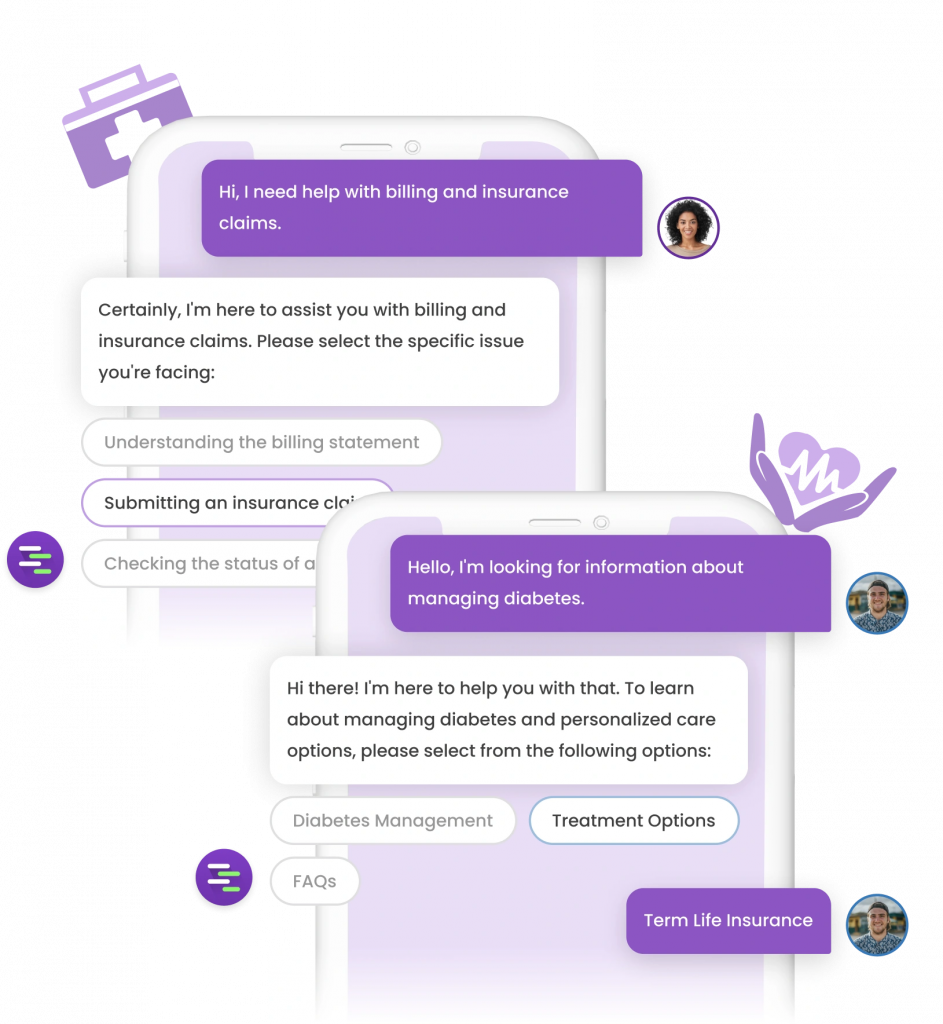
To learn more about these healthcare AI Agents, check out our Healthcare Solutions.
I am a content creator and marketer and a Conversational AI specialist. I enjoy crafting informative content that engages and resonates with my audience. In my spare time, I like to explore the interplay between interactive, visual, and textual storytelling, always aiming to bring new perspectives to my readers.
- What are medical chatbots?
- 1. What are structured medical chatbots?
- 2. What are AI-powered medical chatbots?
- What are the future implications of AI in healthcare?
- Myth-busting: Can AI medical chatbots replace doctors?
- Use-cases of medical chatbots
- How to create a medical Agent: A step-by-step guide
- How Tars uses technology to drive healthcare solutions
- The best of medical AI Agents


Build innovative AI Agents that deliver results
Get started for freeRecommended Reading: Check Out Our Favorite Blog Posts!
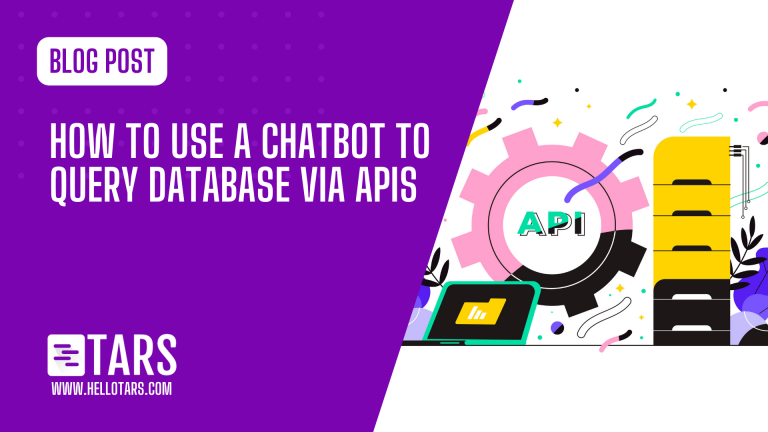
How to Use a Chatbot to Query Database via APIs
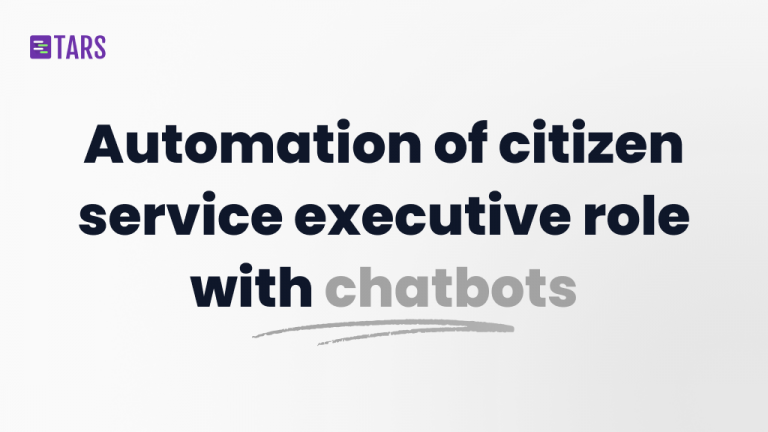
Automation of citizen service executive role and responsibilities with chatbots
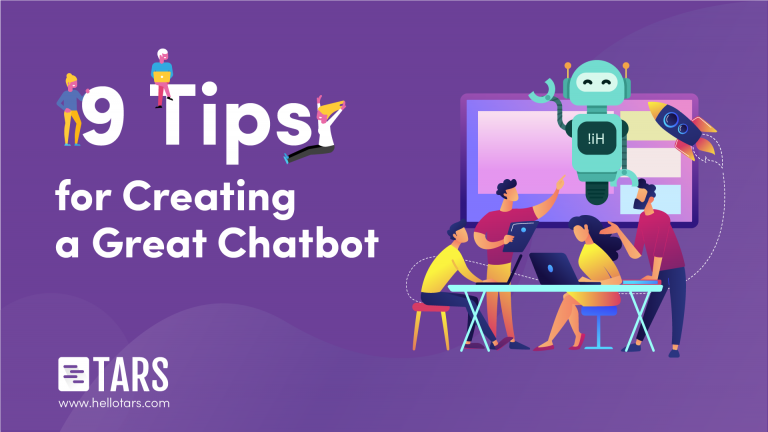
9 Best Practices for Creating A Great Chatbot

Our journey in a few numbers
With Tars you can build Conversational AI Agents that truly understand your needs and create intelligent conversations.
years in the conversational AI space
global brands have worked with us
customer conversations automated
countries with deployed AI Agents





